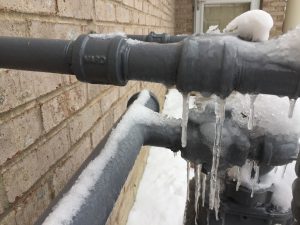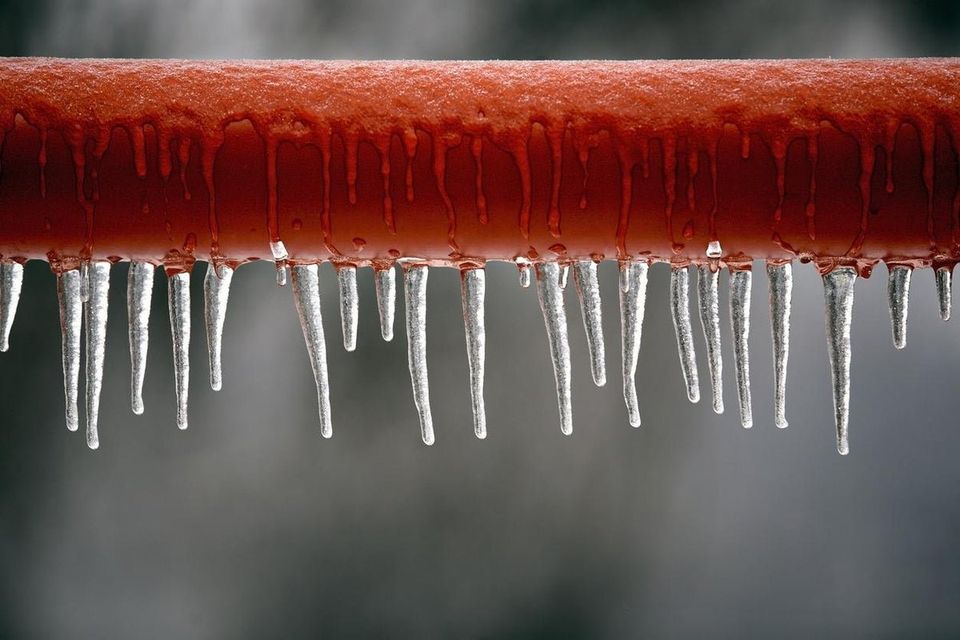Critical Approaches for Avoiding Frozen Pipes in Cold Weather
Critical Approaches for Avoiding Frozen Pipes in Cold Weather
Blog Article
How do you actually feel with regards to How to prepare your home plumbing for winter weather?

Cold weather can ruin your pipes, particularly by freezing pipelines. Right here's exactly how to prevent it from taking place and what to do if it does.
Introduction
As temperatures drop, the risk of icy pipelines boosts, possibly causing costly repair services and water damage. Recognizing just how to avoid icy pipelines is vital for homeowners in cold environments.
Understanding Icy Pipelines
What creates pipes to freeze?
Pipes ice up when subjected to temperatures listed below 32 ° F (0 ° C) for prolonged durations. As water inside the pipelines ices up, it expands, putting pressure on the pipeline wall surfaces and potentially triggering them to burst.
Threats and problems
Icy pipes can cause supply of water interruptions, property damage, and pricey repair work. Ruptured pipelines can flood homes and trigger considerable structural damage.
Indicators of Frozen Pipeline
Recognizing frozen pipelines early can prevent them from breaking.
Exactly how to determine frozen pipes
Search for decreased water circulation from taps, unusual smells or sounds from pipes, and noticeable frost on revealed pipelines.
Prevention Tips
Insulating susceptible pipes
Cover pipes in insulation sleeves or make use of warmth tape to shield them from freezing temperature levels. Concentrate on pipelines in unheated or external areas of the home.
Heating methods
Maintain indoor areas properly heated, particularly areas with pipes. Open up closet doors to allow warm air to flow around pipelines under sinks.
Securing Outdoor Pipes
Yard tubes and outdoor faucets
Separate and drain pipes yard tubes prior to winter. Install frost-proof spigots or cover outdoor faucets with insulated caps.
What to Do If Your Pipes Freeze
Immediate actions to take
If you suspect frozen pipelines, keep faucets available to soothe stress as the ice melts. Utilize a hairdryer or towels taken in warm water to thaw pipelines gradually.
Long-Term Solutions
Structural changes
Take into consideration rerouting pipelines away from outside wall surfaces or unheated locations. Add added insulation to attics, cellars, and crawl spaces.
Upgrading insulation
Purchase high-grade insulation for pipelines, attic rooms, and wall surfaces. Appropriate insulation assists preserve regular temperatures and minimizes the danger of icy pipelines.
Verdict
Protecting against icy pipelines needs positive steps and quick reactions. By understanding the reasons, indicators, and safety nets, property owners can protect their pipes during winter.
6 Proven Ways to Prevent Frozen Pipes and Protect Your Home
Disconnect and Drain Garden Hoses
Before winter arrives, start by disconnecting your garden hoses and draining any remaining water. Close the shut-off valves that supply outdoor hose bibs and leave the outdoor faucet open to allow any residual water to drain. For extra protection, consider using faucet covers throughout the colder months. It’s also important to drain water from any sprinkler supply lines following the manufacturer’s directions.
Insulate Exposed Pipes
Insulating your pipes is an effective way to prevent freezing. Pipe insulation is readily available at home improvement stores and is relatively inexpensive. Pay close attention to pipes in unheated areas such as the attic, basement, crawl spaces, or garage. Apply foam insulation generously to create a buffer against the cold. You can also wrap your pipes in heat tape or thermostat-controlled heat cables for added warmth.
Seal Air Leaks
Inspect your home for any cracks or openings that could let in cold air. Seal any holes around the piping in interior or exterior walls, as well as the sill plates where your home rests on its foundation. Additionally, make sure to keep your garage door closed unless you’re entering or exiting. Leaving it open creates a significant air leak that can lead to frozen pipes.
Allow Warm Air Circulation
During cold snaps, it’s essential to allow warm air to circulate evenly throughout your home. Leave interior doors ajar to promote better airflow. Open kitchen and bathroom cabinets to help distribute heat consistently around the rooms. If you have small children or pets, be sure to remove any household chemicals or potentially harmful cleaners from open cabinets for safety.
Let Faucets Drip
A small trickle of water can make a big difference in preventing ice formation inside your pipes. When temperatures drop significantly, start a drip of water from all faucets served by exposed pipes. This continuous flow helps prevent the water from freezing. Additionally, running a few faucets slightly can relieve pressure inside the pipes, reducing the chances of a rupture if the water inside does freeze.
https://choateshvac.com/6-proven-ways-to-prevent-frozen-pipes-and-protect-your-home/

As a passionate reader on Helpful Tips to Prevent Frozen Pipes this Winter, I imagined sharing that article was really helpful. Please set aside a second to share this blog if you liked it. We treasure your readership.
View Website Report this page